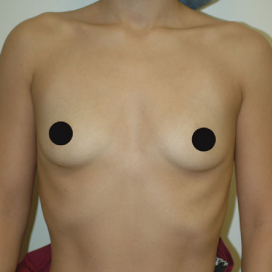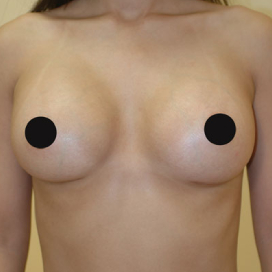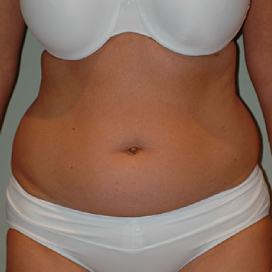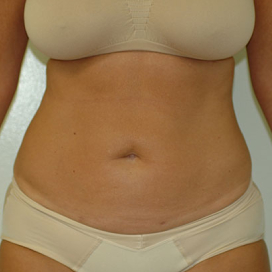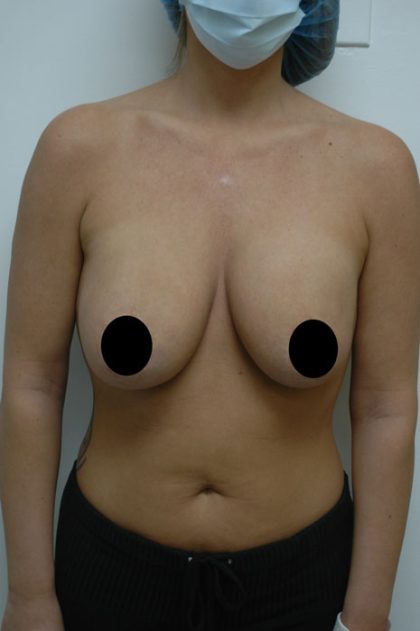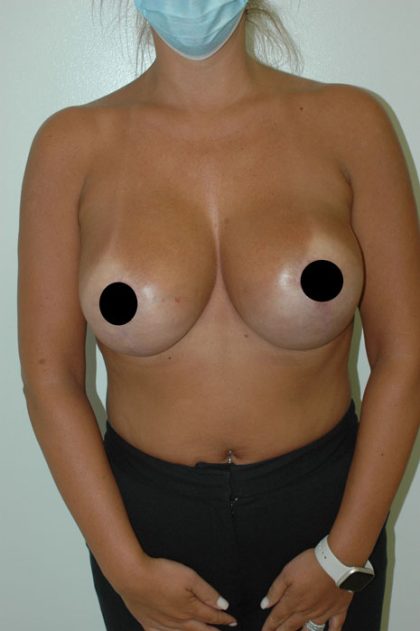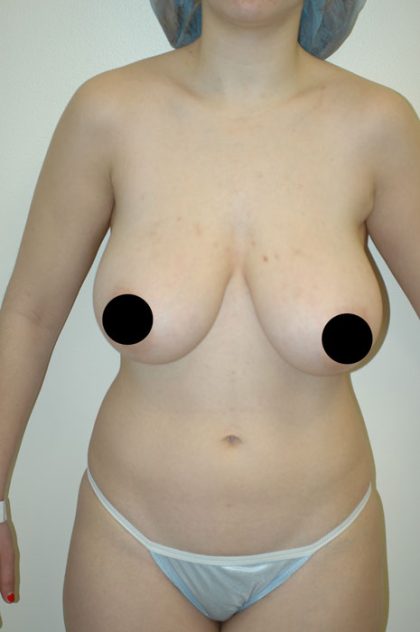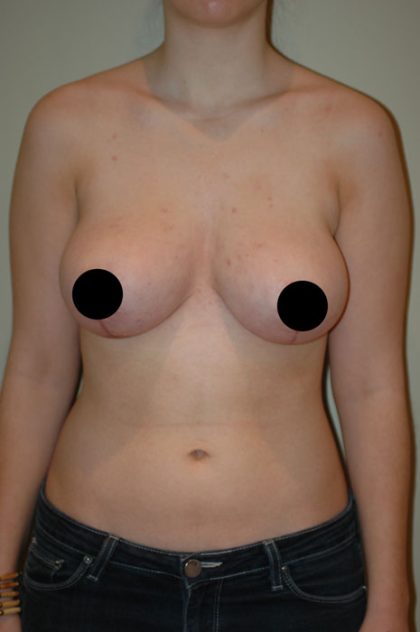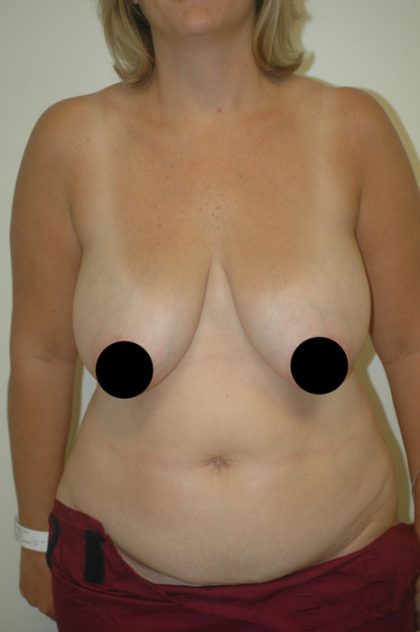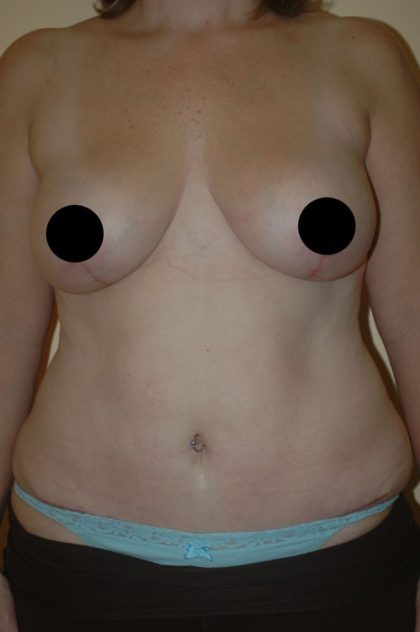Breast Lift
Conveniently located to serve the areas of New Jersey

find out about all of your breast lift options.
Breast sagging can occur due to a variety of factors, such as pregnancy, weight loss, aging, and genetics. A breast lift can help to restore the breasts to a more youthful and lifted appearance, improving both their shape and firmness.
Contents
- 1 Before and After Photos
- 2 Procedure
- 3 Details
- 4 Ideal Candidate
- 5 Contact
- 6 Recovery
- 7 Procedure Facts
- 8 Incision Location
- 9 Sub-Glandular Placement
- 10 Surgery Specifics
- 11 Choosing The Right Size
- 12 FAQ
- 12.1 WHAT ARE THE BENEFITS OF A BREAST LIFT?
- 12.2 CAN A BREAST LIFT BE COMBINED WITH BREAST AUGMENTATION OR REDUCTION?
- 12.3 WHAT TYPE OF ANESTHESIA IS USED DURING A BREAST LIFT PROCEDURE?
- 12.4 HOW LONG IS THE RECOVERY PERIOD AFTER A BREAST LIFT?
- 12.5 WILL A BREAST LIFT RESULT IN VISIBLE SCARS?
- 12.6 HOW LONG DO THE RESULTS OF A BREAST LIFT LAST?
- 12.7 CAN A BREAST LIFT AFFECT BREASTFEEDING ABILITY?
- 12.8 ARE THERE ANY RISKS OR COMPLICATIONS ASSOCIATED WITH A BREAST LIFT?
- 12.9 CAN A BREAST LIFT CORRECT ASYMMETRY OR UNEVENNESS OF THE BREASTS?
- 12.10 WILL A BREAST LIFT CHANGE THE SIZE OR FULLNESS OF MY BREASTS?
- 12.11 HOW SOON CAN I RETURN TO WORK AND RESUME NORMAL ACTIVITIES AFTER A BREAST LIFT?
- 12.12 ARE THERE ANY NON-SURGICAL ALTERNATIVES TO A BREAST LIFT?
- 12.13 HOW CAN I MAINTAIN THE RESULTS OF MY BREAST LIFT IN THE LONG TERM?
Before and After Photos
Procedure
A breast lift, or mastopexy, can do a lot to improve your breast appearance and overall body image. Some of the benefits of a breast lift include:
- Lifting and reshaping sagging or drooping breasts, resulting in a more youthful and perky appearance.
- Repositioning the nipple and areola to a higher position gives the breasts a more natural and aesthetically pleasing shape.
- Reducing the size of the areola, which can become enlarged due to breast sagging.
- Improving breast symmetry, which can be affected by breast sagging or unevenness.
- Boosting self-confidence and improving overall body image, leading to a more positive outlook on life.
Ultimately, a breast lift can help you feel more comfortable and confident in your skin, allowing you to enjoy your body and your life to the fullest.
A breast lift, also known as mastopexy, is a cosmetic surgical procedure that lifts and reshapes sagging or drooping breasts. The procedure involves removing excess skin and tightening the surrounding tissue to raise and support the breasts.
| BREAST AUGMENTATION General Anesthesia with Saline Implants | Avg. $9,500 |
| BREAST AUGMENTATION General Anesthesia with Silicone Implants | Avg. $10,500 |
| BREAST AUGMENTATION & Lift with Saline Implants | Avg. $12,000-$13,000 |
| BREAST AUGMENTATION & Lift with Silicone Implants | Avg. $14,000-$15,000 |
| BREAST LIFT General Anesthesia | Avg. $10,500-$11,500 |
* Disclaimer
Please note that the listed prices are the average cost and may be higher or lower depending on your particular treatment. The financing rates listed depend on your credit and the financing company selected.*
Details
Our double board-certified plastic surgeon Dr. Gartner uses the best breast augmentation methods by using the latest cutting-edge and minimally invasive techniques.
- Choose from a variety of implant textures, shapes, and sizes to achieve your desired expectations.
- You can have your implants placed via the armpit, areolae, breast fold, or belly button.
- You have the option of undergoing your surgery under general or local anesthesia.
- Pre-emptive anesthesia allows you to block any pain and discomfort even before your surgery begins.
- Your care, from the first time you contact us through to your full recovery, is closely monitored by Dr. Gartner and our staff.
when we ask whether you’d like saline or cohesive silicone gel, we’re referring to the substance that is inside the shell. (all implants are made from a silicone rubber shell)
Ideal Candidate
A good candidate for a breast lift is someone who is experiencing breast sagging or drooping due to factors such as pregnancy, breastfeeding, weight loss, or aging. Candidates should be in generally good health and have realistic expectations for the outcome of the procedure.
It’s important to note that a breast lift is not the same as a breast augmentation, which involves the use of implants to increase breast size. However, a breast lift can be combined with a breast augmentation for those who wish to both lift and enhance the size of their breasts.
Before undergoing a breast lift, it’s important to be aware of the following requirements:
- You are not pregnant or breastfeeding. For your safety and to prevent disruption of breastfeeding, breast augmentation should only be performed about 6 months or so after pregnancy and after you’ve stopped breastfeeding.
- You are having the surgery because you have made the choice to do it for your own reasons, and not for anyone else’s. Don’t let anyone force you into having the surgery because it’s your body and your health. You’ll have to live with the results because they are permanent.
- You understand the risks and complications related to this cosmetic procedure. This allows you to make an informed decision on whether the surgery is right for you.
- You are at least 18 years old if you’re considering saline implants, and 22 years old if you’re considering silicone cohesive gel implants.
- You are of normal weight or close to it. Being underweight or overweight may increase surgical risks and complications. Results tend to be better when patients are of a healthy weight.
- You don’t have an infection at the time of your surgery. Having an active infection at the time of your surgery can increase the risk of complications. This goes for other surgeries as well, such as liposuction.
- You understand that to achieve a highly satisfying surgical outcome, you should follow all pre and post-surgical care instructions as outlined by Dr. Gartner. These guidelines include what to do and not to do. For example, you’ll need to refrain from smoking and drinking alcohol for a couple of weeks before and after your surgery.
Contact
Your first consultation is with Dr. Gartner, a Double Board Certified plastic surgeon and general surgeon. During your private medical appointment, you’ll talk about your aesthetic concerns regarding your breast size.
Dr. Gartner will provide you with options on how to adequately address your concerns, as sometimes it may be more than breast enlargement or something else that’s required (for example, a breast lift may also be needed to achieve a pleasing improvement). You’ll find out more about the procedure and the recovery period. We take your safety seriously, which is why you’ll also find out about the risks and complications related to your surgery so you can make an informed choice on whether the benefits of your potential treatment outweigh the risks. You can ask any questions or express any concerns you may have. Dr. Gartner will not rush you through the consultation process because he wants to make sure you know and understand everything your breast augmentation entails.
We recommend you bring a list of questions and concerns with you so that you won’t forget to bring them up during your consultation.
Breast augmentation with implants is currently the most popular method of enlarging breast size.
Part of the consultation will be to briefly discuss your medical history and current condition. This helps Dr. Gartner to determine whether breast enlargement is safe for you.
Learn MoreRecovery
KEEPING CLEAN
You’ll be able to take a shower the day after your surgery. Remove the ace wrap. Use mild soap on the incisions as well, and wash thoroughly without rubbing the area. Gently pat dry. This will help the incisions remain clean and reduce the risk of infection. Baths cannot be taken until about two weeks after your surgery.
HOW YOU’LL LOOK WHILE YOU RECOVER
Right after your surgery, your breasts will appear larger than you may like and will have an odd appearance. They may look flattened out, your nipples may be pointing downward and there won’t be much fullness in the lower portion. This is because of two reasons: swelling and unsettled implants. Swelling (and bruising) is caused by the trauma of surgery and will decrease with time. Your implants will gradually drop into position as well with the force of gravity and natural tissue expansion, which occur to accommodate the additional volume of your implants. This happens over a few months.
You’ll be advised to start wearing a bra two to four weeks after your surgery, depending on how fast your implants settle. During this time, if you dislike the appearance of your nipples through your clothing, silicone disc pasties can be worn to hide them. These are available at Victoria’s Secret, among other stores.
WHEN YOU CAN GO BACK TO WORK
Individual recovery rates can vary; most patients resume a sedentary office job in one week with a gradual resumption of normal activity, although some return much sooner. You will probably have to wait a month or two if your job is physically demanding, particularly if it involves lifting heavy things. Typically, you can expect to recover faster if you receive local rather than general anesthesia.
WHEN YOU CAN GET BACK TO THE GYM
Strenuous exercise can be resumed in four weeks. Please start slowly and gradually increase intensity.
These guidelines are very general. You will receive specific instructions that are designed for your recovery from Dr. Gartner.
YOUR RESULTS
You’ll enjoy a more proportionate body contour that makes you feel more feminine and attractive. Our patients love their new look, and so will you!
THESE INCLUDE THE FOLLOWING:
Your breast width, Your chest width, Your implant size, Your overall body proportions, Your desired results.
In the past, breast implant manufacturers did not produce implants of varying profiles, giving the patient a choice of size only. Fortunately, today you have more freedom of choice, giving you the ability to better achieve the results you want. During your consultation with Dr. Gartner, you’ll be able to discuss the variety of profiles available and which would be most suitable for you.
Procedure Facts
Patients report higher self-esteem and an increase in body confidence following the surgery
PRE-EMPTIVE ANESTHESIA
Dr. Gartner administers pre-emptive anesthesia. Pre-emptive anesthesia involves administering medication before your surgery begins in order to reduce your sensitivity. It has the ability to reduce post-operative pain and discomfort, both short and long term, making it more effective than delivering medication after the surgery has been completed, according to the study, Preemptive analgesia II: recent advances and current trends. Simply put, pre-emptive anesthesia “blocks pain from the get go”. In fact, the recovery room nurses at the university hospital where Dr. Gartner has privileges often remark that his patients tend to have a far easier recovery marked by less discomfort than those who are operated on by other surgeons. In addition, less anesthesia is administered overall.
GENERAL ANESTHESIA
General anesthesia can be administered, which is what most surgeons offer to patients. However, Dr. Gartner is one of the very few plastic surgeons in the country who can also perform your procedure under local anesthesia with some oral sedation. Because it is such a comfortable surgical experience with a faster recovery, about half of patients opt for local anesthesia. You won’t have to deal with any of the risks or side effects related to general anesthesia, and your recovery will be faster. Some patients can have their surgery on a Thursday, and then get back to their desk job by Monday!
MINIMIZE CAPSULAR CONTRACTURE
Dr. Gartner has refined his surgical techniques to minimize the risk of capsular contracture, a common complication that can occur in many patients, according to the FDA. By doing such things as practicing strict infection control protocols wiping the nipples with gauze then applying nipple shields during surgery, Dr. Gartner has reduced his rate of capsular contracture to a minimal margin.
COHESIVE GEL SILICONE IMPLANTS
Dr. Gartner has extensive knowledge of cohesive gel silicone breast implants because he participated in investigational studies before they were deemed safe for the public by the FDA. For this reason, he can better determine the most suitable implant size and shape that will achieve your desired results, based on his highly informed opinion.
INFRAMAMMARY FOLD
Lowering the inframammary fold involves cutting significant ligaments that support the breast, adhering it to the chest wall. This has been found to increase the risk of “bottoming out”, a complication that causes the implants to become displaced and move unfavorably downward in the chest, making revision surgery necessary. In fact, this complication is one of the most common problems Dr. Gartner sees and fixes in patients who have had breast augmentation performed by other surgeons. For this reason, Dr. Gartner never lowers the inframammary fold, preventing bottoming out. You can retain your original breast fold for a more natural-looking result. This also makes wearing an uncomfortable compression garment or bra right after your surgery 24/7 unnecessary, since there’s no concern about the breasts dropping too low. The discomfort from breast augmentation is often related to the pressure of the implant lifting up muscle, and wearing a bra just creates more pressure and hurts more. You’ll only have to wear a bra once your breasts settle into position, and this is usually two to four weeks after surgery.
ACE WRAP
Sizers are used during surgery to shape the area. This minimizes the risk of your implants going too far to the sides. Because your inframammary fold remains intact as well, you won’t need to wear a bra right after your surgery unless otherwise advised. Instead, an ace wrap is placed over the top of your chest, which you’ll remove the next day. Once your implants have settled in the right spot, you can then start wearing a bra regularly to maintain your long-term results (this is generally at two to four weeks after surgery). For this reason, you won’t have to deal with the discomfort and pain of wearing a constricting compression bra for weeks after your surgery, something that is commonly advised by other doctors.
MENTOR SILICONE IMPLANTS
- Moderate
- Moderate Plus
- High
- Ultra High
MENTOR SALINE IMPLANTS
- Moderate
- Moderate Plus
- High
ALLERGAN NATRELLE SILICONE IMPLANTS
- Moderate
- Moderate Plus
- High
- Extra High
NATRELLE 410 SILICONE IMPLANTS
- Moderate
- Full
ALLERGAN NATRELLE SALINE IMPLANTS
- Low
- Moderate
- High
SIENTRA SILICONE IMPLANTS
- Low
- Moderate
- High
Incision Location
incision placement is an essential factor to consider for your breast augmentation. there are four incision sites
PERIAREOLAR
Almost as popular, this incision is placed partially around the areola. It is preferred for women who are concerned about scarring or have a history of irregular scarring because the resulting scar is well hidden by the natural texture and color of the areola. It also allows for easier implant positioning. However, it is associated with a higher risk of breastfeeding difficulties and changes in nipple sensation. Infection is also a concern because of the presence of harmful bacteria in the milk ducts of the nipple. Fortunately, Dr. Gartner takes great measures to reduce the risk of infection by sterilizing the area and using nipple shields, a practice that may lower the risk of capsular contracture as well, which is believed to be caused by bacterial contamination according to the study, Risk of breast implant bacterial contamination from endogenous breast flora, prevention with nipple shields, and implications for biofilm formation.
INFRAMAMMARY
This incision is placed in the fold underneath your breast. This site is the most popular and makes positioning the implants easier. The same incision can be used again in the event a subsequent procedure is performed. However, it also leaves a more noticeable scar which, when properly cared for, will remain as a thin and faint silvery line that remains well hidden by clothing.
Consult Dr. GartnerBreast implant profiles are related to the distance at which your breasts project forward from your chest wall. More projection is achieved with a narrower base width so that they take on more of a domed shape. This means that implants with a lower profile have a wider base width so that there is more of it lying flat against your chest. On the other hand, a higher profile implant of the same volume would have a smaller base circumference so that less of it would be lying flat against your chest.
Generally speaking, higher profiles achieve a more rounded, pointier contour that may be perceived as more youthful. Because of their height, the risk of rippling may also be reduced somewhat. Lower profiles tend to create a softer, sloped breast that is perceived as more natural. The terms used to classify profiles depend on the breast implant manufacturer.
Sub-Glandular Placement
- Sub-glandular placement, also known as sub-mammary, is when the implant is placed under your breast tissue but over your chest muscle.
- Less discomfort during recovery: This is less invasive than sub-muscular placement, which is why you’ll probably feel less discomfort following surgery.
- Faster recovery: Because your chest muscles are left untouched, you’ll probably experience a faster recovery.
- If revision surgery is necessary, the implants can be more easily accessed.
Sub-Muscular placement (“under”)
- True sub-muscular placement refers to implants positioned entirely under the chest muscle. However, this is typically reserved for breast reconstruction patients because it is related to a higher incidence of complications that make it unsuitable for other women. Therefore, when most surgeons talk about sub-muscular placement, they’re really talking about the dual plane.
- Dual plane placement is when only the upper portion of the implant is placed underneath the chest muscle. The lower portion is positioned under sub-glandularly.
- Because the implants are partially covered by the muscles, they are less palpable and visible. This reduces the risk of rippling and wrinkling.
- It is associated with a lower risk of capsular contracture. In fact, according to the study, The correction of capsular contracture by conversion to “dual-plane positioning: technique and outcomes, majority of patients who had capsular contracture and switched to the dual plane position no longer experienced this complication.
- More discomfort may be experienced because the chest muscle is affected.
- A lengthier recovery may be necessary.
These are some of the drawbacks associated with sub-glandular breast implant placement: If you have less of your natural glandular tissue or have a smaller frame, the outline of your implants may be more visible. This could increase the risk of rippling and wrinkling. The implant has the extra support of the chest muscle, which means the rate at which you sag with age is slowed. Mammograms are easier to read because the implant interferes less with glandular tissue. The implant may distort when the pectoral muscles are flexed, particularly if the muscles are highly developed (as is the case for athletes and bodybuilders).
Consult Dr. GartnerSurgery Specifics
your surgery is planned after your consultation, based on your unique physiology and desired results. however, the following is a general outline of what you can expect.
SUTURES
The incisions are closed with sutures and dressed. You will then be taken to our recovery room to be closely observed by Dr. Gartner and a dedicated team of recovery room nurses.
After a few hours, you will be released to return to the comfort of your home to finish your recovery, although you may stay longer if necessary. If you receive local anesthesia, then you’ll probably be able to return home sooner. You’ll have a series of follow-up appointments with Dr. Gartner so that he can monitor your recovery and address any concerns you may have.
ANESTHESIA IS ADMINISTERED
At the beginning of your surgery, you will receive pre-emptive anesthesia. You can then choose to have local with some oral sedation or general anesthesia. Dr. Gartner is one of the few plastic surgeons in the country who can achieve beautiful, natural-looking results under local anesthesia. Your surgery is an hour and 20 minutes under local, or one hour under general.
REMOVE SIZER
The sizer is removed and replaced with the selected implant.
NO-TOUCH TECHNIQUE
Using the no-touch technique to minimize the risk of infection, a pocket is meticulously created under the breast tissue only (sub-glandular) or partially underneath your chest muscle (dual plane). The exact location will be decided upon before surgery, during your consultation.
STERILE SIZER
A sterile sizer is placed in the pocket and inflated to the desired size, adjusting it if necessary. This helps to stretch the skin as well and make room for the actual implant.
Choosing The Right Size
LEARN ABOUT: YOUR TRY-ON SESSION
We’ll give you a bra in the size you want to be along with a fitted t-shirt. Then, we’ll give you a range of implant testers, called sizers, that you can fit into your bra to see how you look. Unlike visualization software, you can then see it in “real life” and even move around to determine whether you like how they feel. If you find that they aren’t large enough, you can try on a larger size. If you find that they get in the way or make you look disproportionate, you can downsize. Like our patients, you’ll find this to be far more helpful than any visualization software available today.

Often, patients come to us with a predetermined cup size that they are adamant about getting. However, choosing implant size based on cup size alone can lead to disappointing results. This is because there is no standardization in cup sizes; bra manufacturers don’t follow any guidelines and create cup sizes on what they believe to be accurate. What you think is a C cup may be a B or D cup from another bra manufacturer. That’s why the Try On Session is an essential part of your pre-surgery planning process—it helps Dr. Gartner get an accurate idea of what you envision your improvement to be without relying on non-standardized cup sizes.
A breast implant size is measured by the amount of saline or cohesive silicone gel that is inside the silicone shell, in cubic centimeters (CCs). There are several sizes available, from 100CC up to 600CC and over. You can choose whichever is the most suitable for you. To get a better understanding of implant sizes before you even come in to see us, simply fill a small baggie with water or dry rice at home. The amount of water or rice you put into the bag can be measured in milliliters, which is essentially the same amount in CCs. You can then place these baggies in your bra and put on a tight-fitting shirt to see how you look in what is informally called, “The Rice Test”. You’ll get a general idea of what size you’d like to be.
Silicone breast implants come prefilled, while saline implants are normally filled to the desired amount after they are placed inside the body.
ROUND
Round implants have been available to the public for a far longer time than teardrop implants and are more commonly used. They come in saline or cohesive silicone gel filling, the latter generally being softer and more palpable than what is used for teardrop implants, and have either a textured or smooth surface. They have narrow to wide base widths to suit the unique physiology of any patient (also known as projections or profiles).
Round implants change their shape subtly depending on your position. They will flatten out a bit when you’re leaning back or lying down, and assume more of a teardrop shape when you’re upright. There is minimal risk of rotation and the resulting deformity or seroma this can cause.
They can add a bit more fullness in the upper portion of the breast if desired.
TEARDROP / ANATOMICAL
Teardrop implants are available with either saline or cohesive silicone gel filling but all have textured surfaces to minimize the risk of rotation (the friction created by a textured surface is how it minimizes rotation). If silicone-filled, they tend to be a little firmer than their round counterparts so that they can retain their shape. Like round implants, teardrops also come in a variety of profiles.
Teardrop implants are designed to mimic the natural sloped shape of the breast, with a pleasing contoured fullness in the lower portion. This shape is maintained even when you’re lying on your back. They can sometimes provide a mild to moderate lift in suitable patients, making an additional breast lift surgery unnecessary.
They may be a better option if you have little of your breast tissue or are slim and want natural-looking results.
However, one of the biggest issues with teardrop implants is the risk of rotation. While this risk is dramatically reduced when the pocket is created to accurately fit the implant, there is still a minute possibility that rotation may occur, causing the breast to deform and a seroma to possibly form. To resolve this issue, revision surgery would be necessary. The risk of rotation is *minimal*, according to the study, Breast implant stability in the subfascial plane and the newly shaped silicone gel breast implants.
Dr. Gartner will discuss the merits and drawbacks of each shape with you. You can then decide which one is right for you.
* Disclaimer
No guarantees of any kind unless they are money-back guarantees. No claims of permanent results. No “Miracle cures” for medical ailments.*
FAQ
WHAT ARE THE BENEFITS OF A BREAST LIFT?
A Breast Lift offers several benefits, including:
* Lifting and reshaping sagging breasts for a more youthful appearance.
* Improving breast symmetry and proportion.
* Rejuvenating the overall breast contour.
* Restoring confidence and self-esteem.
CAN A BREAST LIFT BE COMBINED WITH BREAST AUGMENTATION OR REDUCTION?
Yes, a Breast Lift can be combined with breast augmentation or reduction surgery, depending on your specific needs and goals. Breast augmentation with implants can enhance the size and fullness of the breasts, while breast reduction can reduce their size and alleviate discomfort. Combining procedures allows for comprehensive breast enhancement and can be discussed with Dr. Gartner during your consultation.
WHAT TYPE OF ANESTHESIA IS USED DURING A BREAST LIFT PROCEDURE?
A Breast Lift is typically performed under general anesthesia, which ensures that you are asleep and pain-free throughout the procedure. This allows the surgeon to work safely and comfortably while you are in a controlled, unconscious state.
HOW LONG IS THE RECOVERY PERIOD AFTER A BREAST LIFT?
The recovery period after a Breast Lift can vary from patient to patient. Generally, you can expect some swelling, bruising, and discomfort in the first few days. You will need to wear a supportive surgical bra or a compression garment to aid in healing and minimize swelling. Most patients can return to light activities within a week, but it is important to avoid strenuous exercise and heavy lifting for several weeks.
WILL A BREAST LIFT RESULT IN VISIBLE SCARS?
A Breast Lift will result in some scarring; however, a skilled plastic surgeon like Dr. Gartner will strategically place incisions in discrete areas to minimize visibility. The scars will initially appear red and raised but will fade and flatten over time. Following proper scar care instructions provided by your plastic surgeon can help optimize the healing process and minimize the appearance of scars.
HOW LONG DO THE RESULTS OF A BREAST LIFT LAST?
The results of a Breast Lift are long-lasting; however, factors such as pregnancy, aging, and fluctuations in weight can affect the shape and position of the breasts over time. Maintaining a stable weight and adopting a healthy lifestyle can help prolong the results. Dr. Gartner will provide specific recommendations on how to best maintain your results during your follow-up appointments.
CAN A BREAST LIFT AFFECT BREASTFEEDING ABILITY?
In some cases, a Breast Lift may impact breastfeeding ability. The surgical techniques used during the procedure can involve repositioning the nipples and areolas, which may disrupt the milk ducts. If you are planning to have children in the future and want to breastfeed, it is important to discuss your concerns with Dr. Gartner during your consultation. He can guide the potential impact of a Breast Lift on breastfeeding and help you make an informed decision.
ARE THERE ANY RISKS OR COMPLICATIONS ASSOCIATED WITH A BREAST LIFT?
Like any surgical procedure, a Breast Lift carries certain risks and potential complications. These can include infection, bleeding, changes in nipple or breast sensation, scarring, asymmetry, and adverse reactions to anesthesia. Choosing a board-certified plastic surgeon like Dr. Gartner, who has extensive experience in performing Breast Lift procedures, can help minimize these risks. During your consultation, Dr. Gartner will discuss the potential risks and complications with you in detail.
CAN A BREAST LIFT CORRECT ASYMMETRY OR UNEVENNESS OF THE BREASTS?
Yes, a Breast Lift can correct breast asymmetry and unevenness. During the procedure, the plastic surgeon can adjust the position and shape of each breast to achieve a more balanced and symmetrical appearance. Dr. Gartner will evaluate your situation and discuss the best approach to address your specific concerns during your consultation.
WILL A BREAST LIFT CHANGE THE SIZE OR FULLNESS OF MY BREASTS?
A Breast Lift primarily focuses on lifting and reshaping the breasts, rather than changing their size or fullness. However, some patients may experience a slight increase in breast volume due to the repositioning of the breast tissue. If you desire increased breast volume, combining a Breast Lift with breast augmentation using implants may be a suitable option, which can be discussed with Dr. Gartner.
HOW SOON CAN I RETURN TO WORK AND RESUME NORMAL ACTIVITIES AFTER A BREAST LIFT?
The timeline for returning to work and normal activities after a Breast Lift will depend on the extent of the procedure and your individual healing progress. Most patients can typically return to light activities and work within a week, but it is important to avoid strenuous exercise and heavy lifting for several weeks. Dr. Gartner will provide specific guidelines tailored to your case to ensure a smooth recovery.
ARE THERE ANY NON-SURGICAL ALTERNATIVES TO A BREAST LIFT?
While there are non-surgical procedures that claim to lift the breasts, they often have limitations in terms of effectiveness and longevity. Non-surgical options such as radiofrequency or ultrasound-based treatments may provide temporary tightening and modest improvement but cannot achieve the same degree of lifting and reshaping as a surgical Breast Lift. It is best to consult with Dr. Gartner to discuss the most suitable options for your specific goals.
HOW CAN I MAINTAIN THE RESULTS OF MY BREAST LIFT IN THE LONG TERM?
To maintain the results of your Breast Lift in the long term, it is important to adopt a healthy lifestyle and maintain a stable weight. Avoiding significant weight fluctuations can help preserve the improved breast contour achieved through the procedure. Regular self-examinations and annual mammograms are also essential for breast health. Dr. Gartner will provide specific recommendations and guidelines tailored to your needs during your follow-up appointments.

